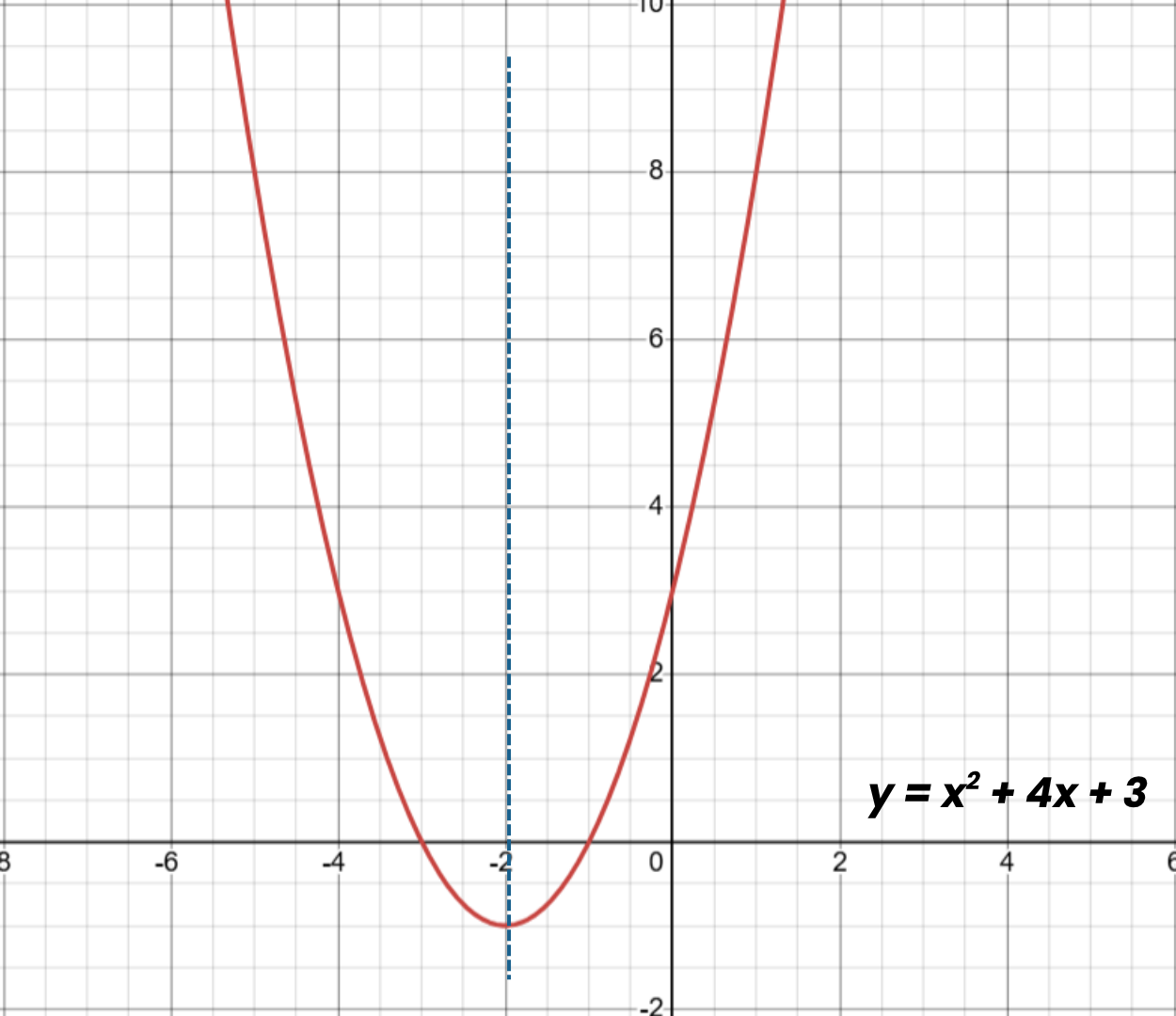Axis of Symmetry of a Parabola
Symmetry shows the balanced and proportional relationship between different parts of an object, shape, or function. It's an important concept to grasp in geometry, algebra, and calculus. In a quadratic function, the axis of symmetry is the line that divides the parabola into two halves. Let’s explore this further below.
In this lesson, you’ll learn:
• What is an axis of symmetry
• The axis of symmetry formula
• How to find the axis of symmetry of a parabola
What is the Axis of Symmetry?
The axis of symmetry of a parabola is a vertical line that divides the parabola into two equal, mirror-image halves.
For a quadratic equation in standard form: y = ax2 + bx +c
The axis of symmetry formula is: x= -b/2a
This line passes through the vertex and helps identify the parabola's highest or lowest point, depending on whether it opens upward or downward.
Find the Axis of Symmetry of a Parabola
1. Identify coefficients from the quadratic equation.
For example, the given quadratic function in standard form is y = x2 + 4x + 3.
In this equation, the coefficients are: a = 1 , b = 4 , c = 3
2. Plug the values of a and b into the formula x=-b/2a.
x = - (4) / 2(1)
x = -4 / 2
x = -2
3. The result is the x-value of the axis of symmetry.
Therefore, x = –2 is the axis of symmetry of the parabola, indicating that the vertical line of symmetry passes through that point on the graph.

Example 1:
Find the axis of symmetry of the quadratic equation y = x2 - 6x + 5.
Solution:
a = 1 , b = -6 , c = 5
Substituting the given values into the axis of symmetry formula:
x = - (-6) / 2(1)
x = 6 / 2
x = 3
Therefore, the axis of symmetry is x = 3.
Example 2:
Find the axis of symmetry of the graph y = 3x2 - 12x + 5.
Solution:
a = 3 , b = -12 , c = 5
Substituting the given values into the axis of symmetry formula:
x = - (-12) / 2(3)
x = 12 / 6
x = 2
Therefore, the axis of symmetry is x = 2.
Find the Axis of Symmetry of a Parabola in Vertex Form
When a quadratic function is written in vertex form, y = a (x - h)2 + k, the values of h and k represent the coordinates of the vertex.
To find the axis of symmetry, we simply use the formula: x = h.
1. Identify the coefficients from the given equation.
For example, the given equation in vertex form is y = 2 (x - 3)² + 5.
In this quadratic function, the coefficients are: a = 2 , h = 3 , k = 5
2. Determine the vertex (h, k).
Based on the data above, the vertex of the parabola is (3, 5).
3. The value of h is the axis of symmetry.
Therefore, x = 3 is the axis of symmetry of the parabola, indicating that the vertical line of symmetry passes through that point on the graph.
Example 3:
Find the axis of symmetry of the parabola y = 3 (x - 2)2 - 4.
Solution:
a = 3, h = 2, k = -4
Substituting the given values, the vertex coordinates are (2, -4).
Since the axis of symmetry always passes through the vertex, the value of h gives us the line of symmetry.
Thus, the axis of symmetry is x = 2.










.jpg)





.png)


%20-%20Thumbnail.png)
.png)
